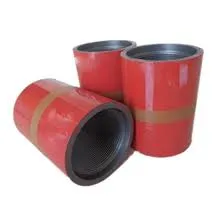- Afrikaans
- Albanian
- Amharic
- Arabic
- Armenian
- Azerbaijani
- Basque
- Belarusian
- Bengali
- Bosnian
- Bulgarian
- Catalan
- Cebuano
- Corsican
- Croatian
- Czech
- Danish
- Dutch
- English
- Esperanto
- Estonian
- Finnish
- French
- Frisian
- Galician
- Georgian
- German
- Greek
- Gujarati
- Haitian Creole
- hausa
- hawaiian
- Hebrew
- Hindi
- Miao
- Hungarian
- Icelandic
- igbo
- Indonesian
- irish
- Italian
- Japanese
- Javanese
- Kannada
- kazakh
- Khmer
- Rwandese
- Korean
- Kurdish
- Kyrgyz
- Lao
- Latin
- Latvian
- Lithuanian
- Luxembourgish
- Macedonian
- Malgashi
- Malay
- Malayalam
- Maltese
- Maori
- Marathi
- Mongolian
- Myanmar
- Nepali
- Norwegian
- Norwegian
- Occitan
- Pashto
- Persian
- Polish
- Portuguese
- Punjabi
- Romanian
- Russian
- Samoan
- Scottish Gaelic
- Serbian
- Sesotho
- Shona
- Sindhi
- Sinhala
- Slovak
- Slovenian
- Somali
- Spanish
- Sundanese
- Swahili
- Swedish
- Tagalog
- Tajik
- Tamil
- Tatar
- Telugu
- Thai
- Turkish
- Turkmen
- Ukrainian
- Urdu
- Uighur
- Uzbek
- Vietnamese
- Welsh
- Bantu
- Yiddish
- Yoruba
- Zulu
Exploring the Applications and Benefits of Steel Couplings in Modern Engineering Solutions
The Steel Coupling A Versatile Solution in Engineering
Steel coupling refers to a mechanical device used to connect two shafts or other components, allowing for torque transmission while accommodating misalignment and vibration. This essential component is widely utilized across various industries, including manufacturing, automotive, marine, and construction. The importance of steel coupling cannot be overstated, as it plays a vital role in ensuring the smooth operation of machinery and equipment.
One of the primary advantages of steel coupling is its strength and durability. Steel, being a high-tensile material, can withstand significant forces and extreme conditions. This characteristic makes steel couplings preferable in heavy-duty applications where other materials may fail. For instance, in the automotive industry, steel couplings are often employed in drive shafts to transfer power from the engine to the wheels effectively. Their resilience ensures that vehicles can operate reliably even under high-stress conditions.
Moreover, steel couplings are designed to accommodate various degrees of misalignment
. Misalignment can occur due to thermal expansion, installation errors, or wear and tear over time. If not addressed, misalignment can lead to excessive wear on machinery, reduced efficiency, and operational failures. Steel couplings generally come in different types, such as rigid, flexible, and universal, each designed to tackle specific alignment issues. Flexible couplings, for example, allow for angular, parallel, and axial misalignment, thereby extending the life of the coupled equipment and reducing maintenance costs.steel coupling

Another significant benefit of steel couplings is their ability to dampen vibrations. Machines in operation often produce vibrations that can adversely affect performance and longevity. By using steel couplings with vibration-dampening properties, engineers can enhance the stability of the entire system. This feature is particularly important in applications like pumps and compressors, where continuous operation and reliability are crucial.
In terms of installation and maintenance, steel couplings are relatively straightforward. Many designs facilitate easy assembly and disassembly, which is essential for routine maintenance and repairs. This ease of use not only saves time for technicians but also minimizes downtime for equipment, thus improving overall productivity.
When discussing steel couplings, it is essential to consider the various types available in the market. The common types include rigid couplings, which provide a solid connection between two shafts; flexible couplings that can absorb misalignments; and couplings with particular features, such as quick disconnects for rapid assembly. The specific type chosen will depend on the application's requirements, including load capacity, alignment conditions, and environmental factors like temperature and exposure to chemicals.
In conclusion, steel couplings are indispensable components in modern mechanical systems. Their robust construction ensures durability, while their flexible designs address alignment and vibration challenges. Industries relying on high-performance equipment benefit greatly from the use of steel couplings, as they contribute to improved efficiency and reduced maintenance costs. As technology continues to advance, we can expect innovations in coupling design and materials, further enhancing their capabilities and applications across various sectors.
-
Tubing Pup Joints: Essential Components for Oil and Gas OperationsNewsJul.10,2025
-
Pup Joints: Essential Components for Reliable Drilling OperationsNewsJul.10,2025
-
Pipe Couplings: Connecting Your World EfficientlyNewsJul.10,2025
-
Mastering Oilfield Operations with Quality Tubing and CasingNewsJul.10,2025
-
High-Quality Casing Couplings for Every NeedNewsJul.10,2025
-
Boost Your Drilling Efficiency with Premium Crossover Tools & Seating NipplesNewsJul.10,2025







